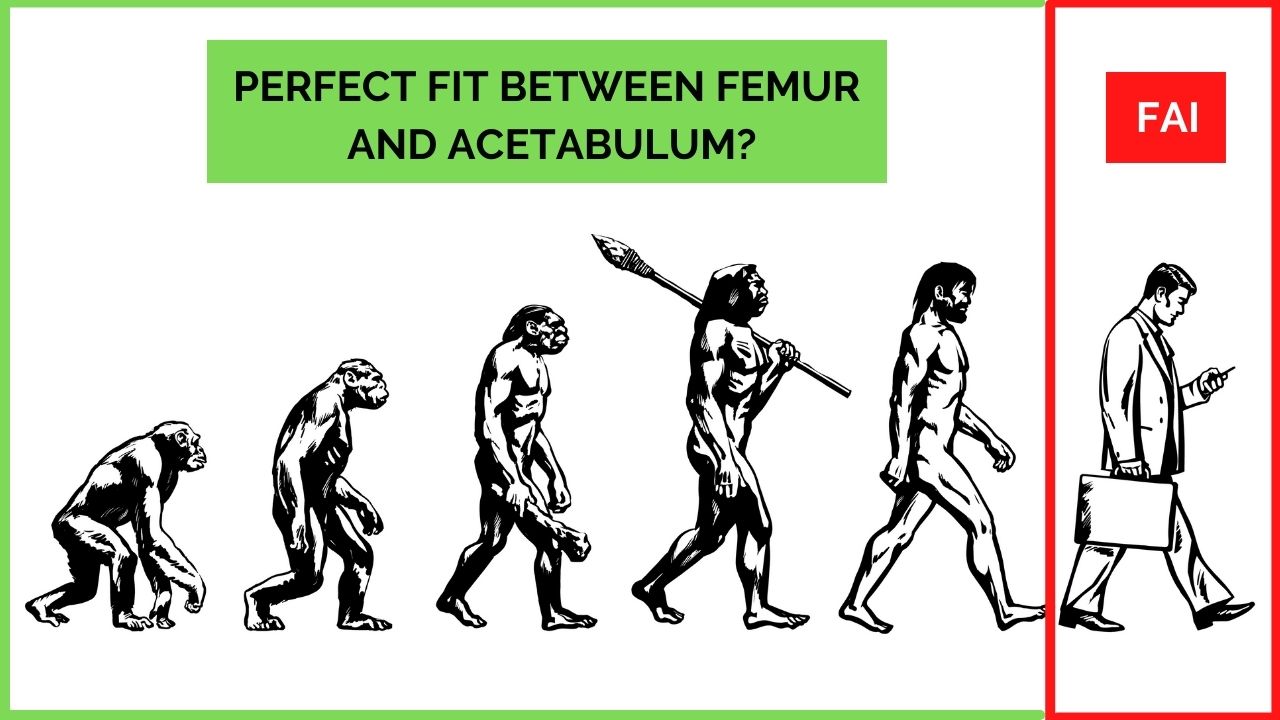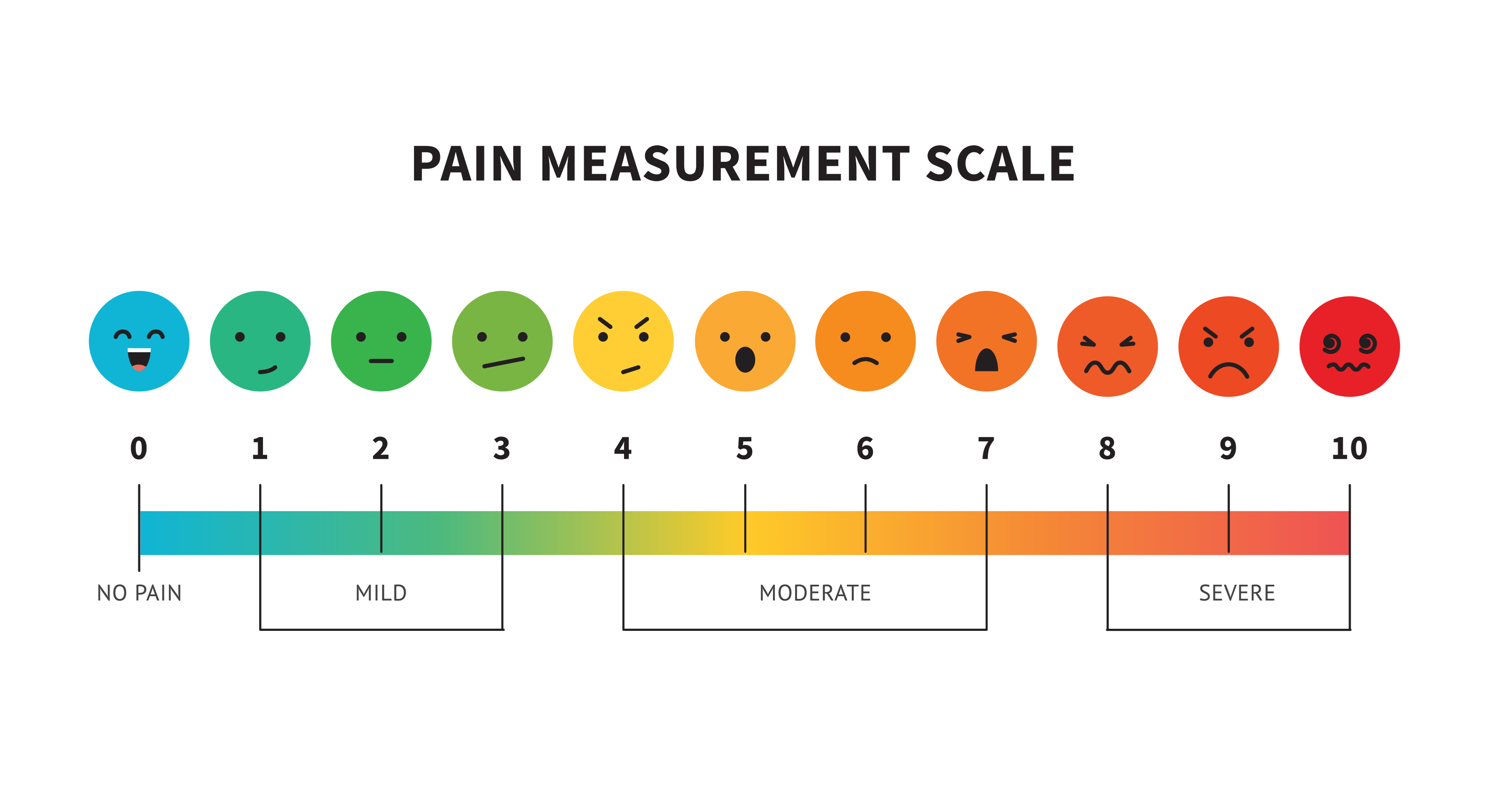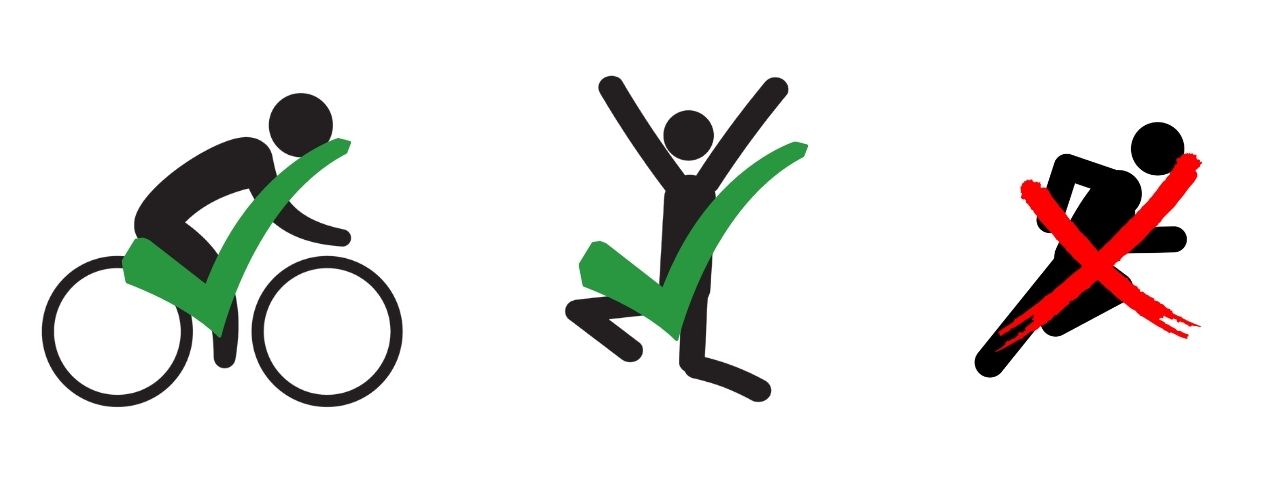How to Continue Workouts With Femoroacetabular Impingement
Are you looking for safe and effective exercises to improve your femoroacetabular impingement ("FAI") hip pain? Have you noticed that traditional physical therapy exercises don't work? Have you also noticed that soft tissue work or banded hip distractions only provide temporary relief at best?
Well I've been where you are. I had pain associated with FAI and a hip labral tear. And over the last decade, I've trained myself out of chronic hip pain and have helped many others do the same.
In this post, I'll share a follow along routine that targets FAI hip pain. I'll also share with you the WHY. Because if you don't understand why you're doing these exercises and for what ultimate purpose, they are useless.
Towards the end of the article, I share my thoughts on some frequently asked questions for people in FAI pain. You can skip down for those right away or check them out after you perform the workout. Enjoy!
Femoroacetabular Impingement Exercises
A consistent message I share in my content is to identify your low hanging fruit in the six main hip movements. You might experience pain in the outside of the hip. Or the groin. Or the hip flexor. Where you feel the pain can be where part of the problem lies but rarely is the entire issue localized to one painful area.
More commonly, the pain pattern we experience is a result of how we carry our bodies. In our postures. In our movements. And in our resting positions. By focusing on just the areas that hurt, we are missing the big picture. We are missing the forest for the trees.

There can be issues with the feet, shoulders, spine or other important joints in the body that are contributing to your pain pattern. But I find that those in FAI pain start seeing great initial results if they focus on the 6 main movements of the hip.
Your goal with the workout below is to start seeing what's possible if you exercise your hips with this intention. To not focus on the area that hurts but to get the hips stronger and more resilient in all of their main functions.
As you go through the workout, see if you can notice which exercises give you the most difficulty. This will be your low hanging fruit and what you should target even more in future workouts.
FAQs on FAI Exercises
Can I exercise with femoral acetabular impingement?
YES. YES. YES. There is nothing more false than believing you cannot exercise with FAI. In my opinion, FAI is not an abnormal or uncommon condition. Numerous studies performing X-rays on asymptomatic hips show that many people have FAI with no hip pain. Here are just a few:
- 25% of 244 men with no history of hip pain had FAI
- Meta-review analyzing 2,114 asymptomatic hips found FAI in 67% of hips
- 57% of asymptomatic Korean men had FAI
- 72% of 110 asymptomatic hips had signs of FAI
FAI is diagnosed when there is not a "perfect" fit between the femur and the acetabulum. But what makes us think that this fit should be perfect? FAI only started getting diagnosed in the 1990s. Do we think the femur perfectly fit into each person's acetabulum before the orthopedic field invented the FAI diagnosis?

Of course not. Some studies show that FAI is present in 72% (!) of men with no history of hip pain. FAI is a normal and common characteristic of hip anatomy. And should not make you think or feel that you cannot exercise.
Are there any exercises to avoid with FAI?
We now know that FAI is not some horrible and disabling condition. Instead, FAI is a common characteristic of the hips that is extremely common in the general population. So the short answer is that, in my opinion, there are no exercises to avoid if you have FAI.
But that doesn't mean we shouldn't think carefully about which exercises to do. It's not the FAI diagnosis that should dictate our choices but the hip pain that we are experiencing. So a good question to ask oneself is "Should I avoid deadlifts because I have hip pain?" instead of "Should I avoid deadlifts because of my FAI?" Oftentimes, this shift alone makes it much easier for people to answer the question themselves.
Another helpful strategy I provide clients is to do the thing they want, mindfully. If the pain gets above a 6 or 7 during an activity, then slow it down and see if you can reduce the intensity.
 The reason for this encouragement is because avoidance is a slippery slope. I see many people in a pattern of avoidance and fear which can make the pain even worse. This reinforces a feeling that you are broken or damaged because of your FAI. And nothing can be further from the truth.
The reason for this encouragement is because avoidance is a slippery slope. I see many people in a pattern of avoidance and fear which can make the pain even worse. This reinforces a feeling that you are broken or damaged because of your FAI. And nothing can be further from the truth.
What are the best aerobic exercises for FAI?
To reiterate, a better question here would be "what are the best aerobic exercises if you are in hip pain?" But people diagnosed with FAI will be asking the above question. And I want my content to reach these individuals because this was me at one point in my journey. And I was searching for answers about FAI, not hip pain.
Aerobic exercise is important. Not only for cardiovascular fitness but for so many other health benefits as well. Many of my clients diagnosed with FAI avoid all aerobic exercise and end up getting out of shape, gaining weight and becoming more psychologically distraught.

So I think the best approach is to perform the type of aerobic exercise that is most comfortable for you. Walking. Elliptical. Cycling. Whatever. Be mindful of your pain levels but if you don't experience anything above a 5 or 6 in pain then you should feel safe.
If there is a certain activity you love but cannot do without pain, then a great goal to set would be to get back to this activity. You now have a purpose behind your exercise exploration. And I suggest setting some reachable goals in the beginning.
For example, if you are a runner and are used to putting in 10 miles a run, maybe set a goal of running 2-3 miles at first. And eventually, you can add more miles as you see more improvements in corrective exercise.
Closing Thoughts
The best place to start training your hips is somewhere. Good enough is better than perfect. And if you're just starting out, the goal should be to show up and learn a little bit more about your hips each day.
Each new exercise is an assessment of your hip function. And it's common to practice a challenging exercise for weeks, if not months, before it starts getting easier.
Rebuilding hip function and reversing our imbalances takes time. Hopefully the exercise routine in this post lights a fire in you to continue exploring your hips. Try my free hip starter course to keep the momentum!
edmondstoneinvuld.blogspot.com
Source: https://www.maksreznik.com/blog/exercises-for-fai